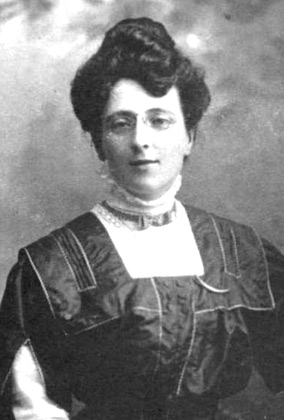
You'll understand the cover by the end of the book.
The Giver is a John Newbery Medal winner--a high honor for children's fiction. People from about age 10 on up would enjoy and appreciate it. The hero is 12 years old.
Jonas is a happy 11-year-old, fits in well with his peers, has a happy home life. His only worry is that at age 12, a job assignment will be given to him and he doesn't have a particular feeling about what it will be. He seems interested in everything, but not too interested in anything. Then he starts to have strange moments when things look different. He doesn't know how to describe it. And he knows it would make him seem odd. Odd is not good. Sameness is good.
The community in which Jonas has grown up is committed to Sameness. All of its laws and traditions enforce the principal that Sameness is good, stability is good, predictability is good. Highs and lows, likes and dislikes, even extreme language is censored. When Jonas's friend Asher uses a colorful word, he is corrected immediately by his teacher:
"...once again you have provided an opportunity for a lesson in language. 'Distraught' is too strong an adjective to describe [your experience].' He turned and wrote 'distraught' on the instructional board. Beside it he wrote 'distracted.'
Gradually, the ground rules of Jonas's community emerge. Any feelings that do arise among the limited lives of the citizens are talked away in a bizarre sort of rational-emotive or cognitive therapy. When Jonas's sister Lily talks about a bad experience at school, her parents politely "unpack" it for her, validating and then eliminating her feelings. When Jonas's mother relates a stressful encounter at work,
Lily [Jonas's sister] stood up and went to her mother. She stroked her mother's arm. From his place at the table, Father reached over and took her hand. Jonas reached for the other. One by one, they comforted her. Soon she smiled, thanked them, and murmured that she felt soothed.
This sounds good. My family could have used a dose of these strategies. But the reader discovers that things in this place are just a bit too soothed, a bit too regulated. Clothing is doled out based on age and occupation. Bicycles are strictly governed as to when you can get one and what kind it is. A P.A. system filters instructions and cautions to the whole community. Occupations are chosen for children when the turn 12, which they do all at once together in December. Individual birthdays are not celebrated. When people get to be a certain age they are retired to Old People Homes. And, at the right time, they are "released."
Jonas sees some of the inconsistencies in philosophy of his group, but, like a good citizen, he dismisses them thoroughly--until his group's twelfth birthday. His occupational assignment is astounding, and gives him a new and frightening look at the principles governing his life. Thus is the utopian community exposed.
I don't want to keep going, because I am getting too close to spoilers, and some of plot turns made me gasp. I will say, however, that this is a really good book. It reads quickly and well...just slow enough at first to get your buy-in for the Sameness culture, and then speeding up as Jonas's insights come crowding in. Here is a picture that sums up the whole book:
 The Giver,
The Giver, by providing contrast, explains and softens some of the hideous things that don't happen in Sameness--brutal death, sickness, starvation, cruelty. Because to wipe those out wipes out happy life, wellness, fullness, and love. Jonas's culture decided that the trade-off was worth it.
The book is inconclusive in its ending. However, there are two sequels,
Gathering Blue and
Messenger. I will be reading them to see how the dilemmas established by
The Giver can ever be resolved.
Best bits: When Jonas discovers snow by experiencing it before he has words for it. Really cool.
Gripe: OK, so it's a utopia. So, it must be fatally flawed. No one ever gets it right. Yep, here comes a person vs. nature, person vs. machine, person vs. control book. The utopia will be exposed, every time. In books where a utopia is built, it is the end of the book. There is no plot line to pursue in a utopia. That's just sad. But it happens all the time. The grand structure of Aragorn's utopia in
Lord of the Rings: Return of the King, is summed up in a couple of paragraphs; the great achievement is way more interesting in the becoming than in the being. I used to argue all the time with people who claim that suffering is good because it teaches you things. Can't we learn more through happy experiences? It doesn't seem to be the way of the West. I've given up the argument. Now, past 50, it's not worth the bother. And people who don't suffer do seem sort of shallow. Who knows... Anyway, the plot has been done before, ad nauseum. It probably gets repeated because it works. In this book, it is masterfully done.
Physical Description: Traditional paperback size; limited front and end matter, but has printing on inside of front and back cover; 23 chapters (ouch, a prime number) in 179 pages; intriguing cover (see above) featuring seal of Newbery.



 Meg Merrilies in a stage portrayal, 1855
Meg Merrilies in a stage portrayal, 1855 Lucy Maud Montgomery
Lucy Maud Montgomery

